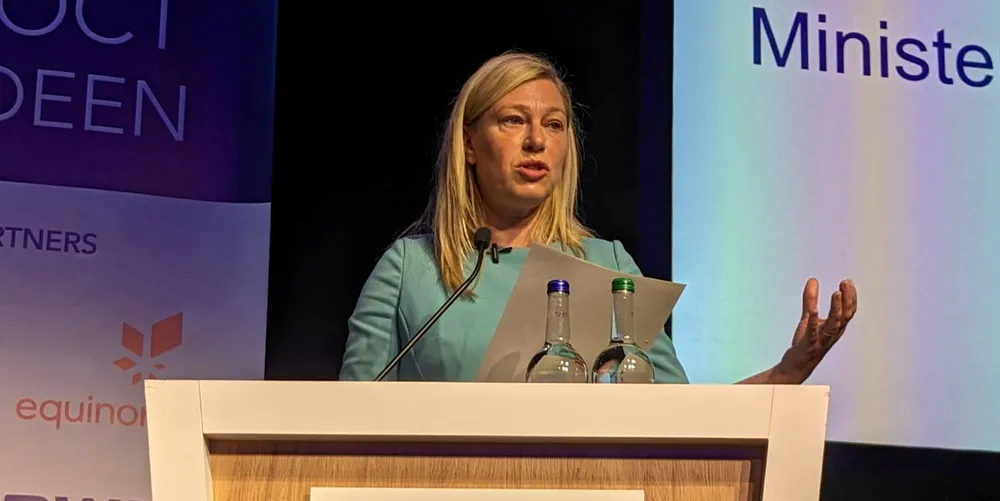'Time to act': Scottish minister warns UK to boost strike prices as clock ticks on wind plans
Scotland fears that potential prime mover advantages could start to slip unless the UK government improves CfD terms

The UK government is in danger of missing a golden opportunity unless it moves decisively to change the contract-for-difference (CfD) mechanism in time for its next auction round for offshore wind power, Scotland’s energy minister warned today.
In a keynote address to the Floating Offshore Wind event opening in Aberdeen today (Wednesday), Scotland's minister for energy and the environment Gillian Martin described what she termed a failure to take these headwinds into account as a missed opportunity.
“If the UK government is serious about its 2050 net zero target, as the Scottish is serious about its 2045 target, AR6 cannot be allowed to go the same way,” she stated.
In an opening panel at the Aberdeen event, Nicola Higgins, offshore wind programme director at the UK department of energy security and net zero, said the government is carrying out standard post-auction analysis, where learnings may be carried through to the next round.
She said the first reporting stage in this timetabling process occurs in mid-November, but she could not confirm whether a review of strike prices is on the table.
Gabriel Davies, head of floating wind at Danish developer Orsted told another panel at the event that industry needs “enabling and resilient frameworks”.
“We have to draw lessons from what we have seen recently in AR5 but also the headwinds we have faced by the seabed-fixed industry. We need to design frameworks which provide adequate support, long-term predictability and resilience to changing marco-economic environments,” Davies said.
Gillian Noble, managing director for offshore development and operations with Iberdrola-controlled Scottish Power, was also critical. “AR5 was not a surprise. It was well trailed, in the developer space that it was going to be challenging. There was time to fix it, and it wasn’t fixed,” she fired.
“Rather than dwell on that, we can say the UK had a blip and get on track for AR6. There is still time but it means starting now, and looking beyond AR6. There has to be an administrative strike price that is realistic, but we need to discuss this and understand the cost pressures as well as well as more technical issues such as indexing and risk… I’d like to think that we’ve had a watershed moment and that we can get back on track.”
In her keynote address, Martin stressed earlier that Scotland has the first and the biggest test-scale projects for floating wind and is positioned to consolidate this with a 28GW leasing round pipeline thanks to the world-leading ScotWind process.
The country is also the location for five floating wind projects with exclusivity agreements signed within the framework of the INTOG programme for oil & gas decarbonisation, aimed at de-risking technology and working out supply chain issues.
“We all know the examples that can found as a prime mover, and we must not miss this opportunity,” she said, pointing to Scottish and UK measures in areas such as port investments, training and supply chain development.
The immature state of the floating wind sector led to some calls for differential treatment.
“I think it is really important that the administrative strike price reflects that the technology is still quite immature and also that the much smaller INTOG projects will face challenges if they are asked to compete with much gigascale-scale projects from the same funding pots,” said Orsted’s Davies.
"These nuances have to be figure out very quickly and not just as a quick fix for AR6."